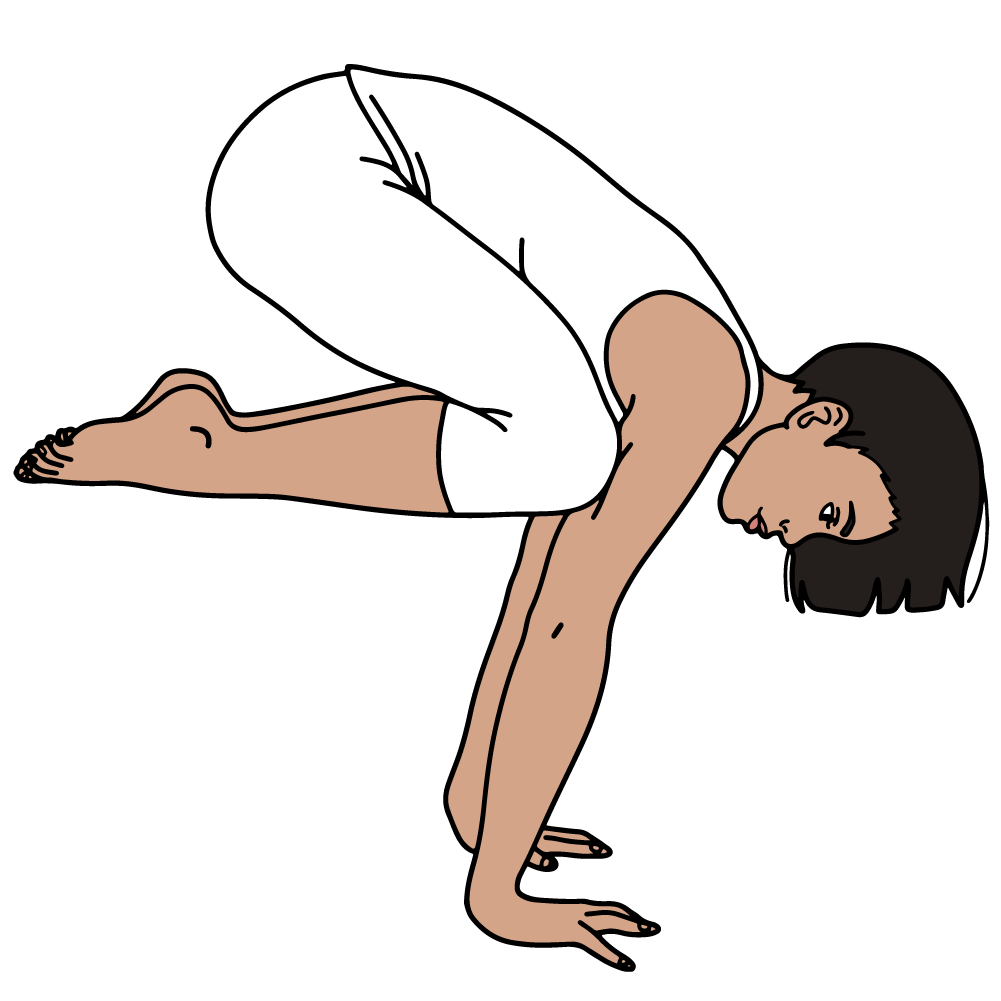Bakāsana: The Crane (or Crow) Pose
बकासन

bakasana - crane pose - crow pose
Bakāsana: The Crane (or Crow) Pose
Bakāsana (bakasana), also known as the Crane or Crow Pose, is one of the most recognized yoga poses worldwide. 'Bakāsana' is derived from Sanskrit, where 'Baka' means 'crane' and 'āsana' means 'pose.' The Devanagari script for it is बकासन. In some yoga traditions, it is referred to as 'Kākāsana' (काकासन), where 'Kāka' translates to 'crow.'
As a bird, the crane symbolizes grace, patience, devotion, and unconditional love in many cultures. When we talk about Bakāsana in the context of yoga, it is believed to evoke the same virtues in the practitioner. Patience and devotion are particularly relevant as this pose requires consistent practice and a dedicated mind to master. As such, it beautifully symbolizes the journey of yoga itself – a journey of continual self-discovery and perseverance.
Physically, Bakāsana helps strengthen the wrists, forearms, and abdomen while improving balance and full-body coordination. Mentally, it enhances focus, concentration, and mind-body awareness. It is a testament to the holistic approach that yoga encapsulates.
Exploring Crow Pose / Crane Pose - one method from coming into the pose:
- Start in a standing forward bend.
- Place your hands on the floor shoulder width apart or wider.
- Bend your elbows and knees; draw your knees in and up toward your armpits.
- Lean forward as you come onto your toes and lift your hips toward the ceiling.
- Lift your tailbone as high up as possible without tipping forward.
- Slowly lean forward to bring more weight to your hands.
- Isometrically squeeze your arms with your shins/knees to create stability.
- Begin to lift one foot at a time off the ground.
- Bring your heels toward your buttocks as you lift higher.
- Keep your gaze downward without tensing your neck.
The pose requires strong wrists with the ability to bear weight with a substantial bend in the wrist, requiring a high degree of flexibility; it is important to work up to this level of wrist strength and flexibility.
The pose is more about balance than strength, and it helps to practice in supportive positions to find the balance point, release excess effort, and lean into the pose.
If you're new to the pose or finding it challenging – there are ways to ease into it. You can practice Bakāsana with some modifications to provide stability:
Use a Block: Place a yoga block in front of you and let it support your forehead as you lift your feet off the ground. This gives you a sense of security and eases the fear of falling forward.
Practice With One Foot: Start lifting one foot off the mat at a time. Once you're comfortable with the balance, try lifting the second foot.
Use a Wall: Practicing near a wall can provide psychological comfort and physical support to prevent falling backward.
Remember, the beauty of yoga lies in the journey, not just the destination. The process of gradually building strength, balance, and coordination to find the balance of effort and ease in Bakāsana; this is where you'll find the true essence of patience, grace, and devotion.
Bakasana is a potent pose that combines the essence of spiritual and physical yoga into a single, graceful asana. As you practice this pose, let it imbue you with the spirit of the crane – patient, loving, devoted, and always reaching for the sky.
